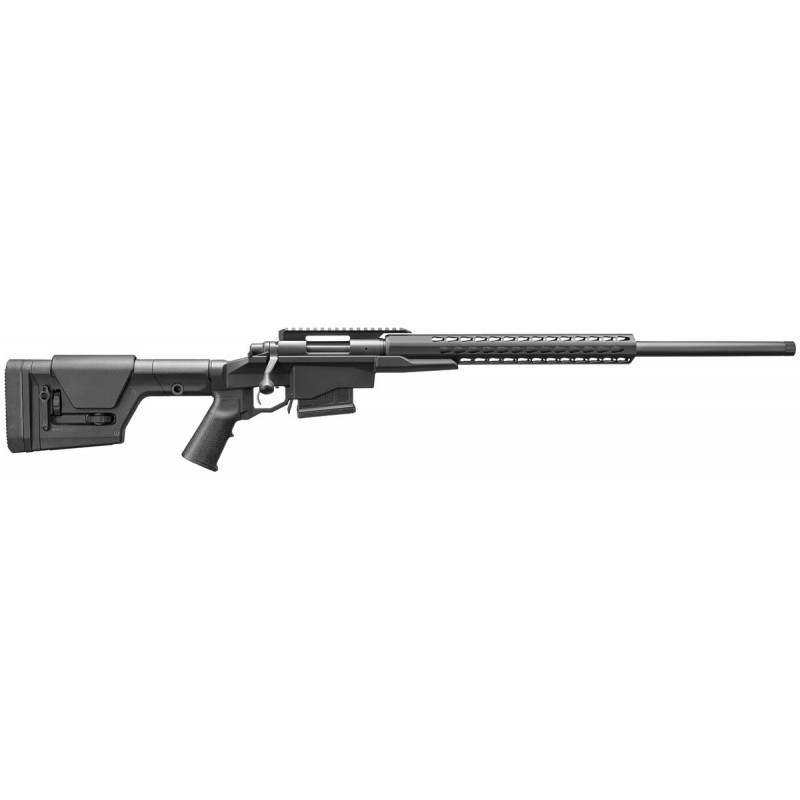

#REMINGTON 700 PCR 6.5 CREEDMOOR MUZZLE BRAKE HOW TO#
To learn how to bed a rifle stock, click here.įor the precision shooter a chassis can offer an upgrade to a detachable AICS styles magazine, adjustable length of pull and an adjustable comb that will allow correct alignment behind today’s larger tactical optics. This is a fairly labor intensive process that requires a lot of prep work. All offer a wide variety of options that will improve ergonomics and provide a solid base for your barreled action.įor best performance, fiberglass stocks typically need to be bedded. Depending on what your rifle currently has and what your budget is, you can step up to a fiberglass stock from Bell and Carlson, HS Precision, Grayboe or McMillan. I don’t a like chassis on hunting rifles. Not only will you most likely see a significant increase in precision, but you can add features like a detachable magazine system. You can find my review of the Spuhr ISMS here.Ĭhanging the stock or chassis on your rifle can be a game changer. If your budget is not an issue, the ISMS from Spuhr is worlds apart from anything else on the market. I’ve been using both for decades (I’m getting old) and think they provide a solid interface for the hunter.įor M700s set up as precision rifles, I like a one piece steel base with heavy duty rings from either Badger Ordnance or Nightforce. On hunting rifles I like Warne (above) and Talley rings and bases. They aren’t machined, typically don’t fit very well and often don’t hold up well. It drives me nuts when guys will spend hundreds or thousands of dollars on a rifle and scope and drop $4 on a extruded aluminum base. A solid set of rings and bases are essential to accuracy. Beyond the scope, many overlook the rings and bases. A great scope is always good, and many will buy the best that they can possibly afford. I’m going to guess 99% of my reader’s Remington 700s have a scope on them. Made in Canada, I’ve been using two of these triggers since their introduction and they are a close second to the Timney. TriggerTech makes a nice “zero creep” trigger. The Jewel HVR is held together with screws which can fall out and work loose, because of this I wouldn’t use one in a field or working gun. For a match gun, I can turn a Jewel down to uncomfortably low weights, something the pure target shooters may be fond of. These are great triggers in their own right, however, the 510 is my go-to trigger. Timney also offers a two-stage design as well as the Calvin Elite, which I like a lot. These balance a crisp pull with an acceptable weight. I like the Timney 510 (curved front) and 517 (flat front) triggers. Swapping out a trigger requires a few basic tools and can greatly improve your shooting. It isn’t enough that they get a lot of bad press for them, but on top of that they are amongst the heaviest and least user friendly on the market.

The factory triggers on most Remingtons are pretty awful.

We aren’t going to talk about optics since that is a subject that deserves its own post, but let’s look at 4 big areas: triggers, rings & bases, stocks, and chassis & barrels. In this post let’s take a look at Remington 700 upgrades and modifications the can increase performance. More importantly, full-on custom builds can cost big money incrementally changing your rifle will be much easier on your wallet. Plus, in many cases, you can get exactly what you want. Why upgrade a factory rifle? For one, it’s usually cheaper to modify your current factory rifle than to buy a new one. While it helps to have a specialized skill set with a lot of expensive tools to work on guns, many modifications can be made by the average shooter on his own. Be it their house, car or firearm, they try to make it better. Most guys I know love to tinker with stuff.


 0 kommentar(er)
0 kommentar(er)
